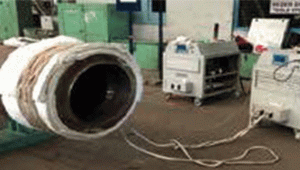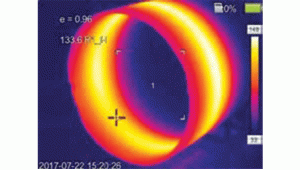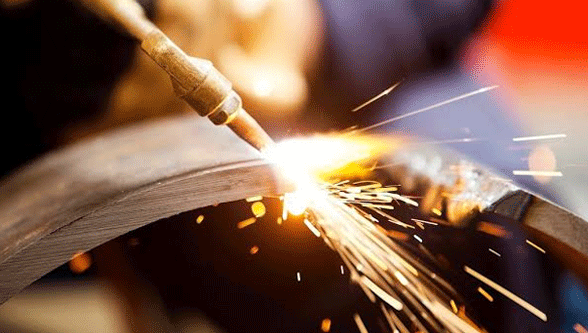Thanks to the Induction Cookware, the concept of Induction is now fairly well known. Induction is a method by which heat is generated directly inside the metal, it is not radiated or conducted but Inducted. What this means is that you can heat a specific part of the object without affecting the surroundings too much.
Efficiency

Advantages of Induction heating are too many, for one it is one of the most efficient method of heating. According to a study conducted by American Department of Energy (US DOE) heating with gas, electric heating and Induction for the same object, the efficiency of heat transfer and heating was 44%,74% and 84% respectively. Which means heating with Induction compared to Gas is almost 40% more efficient.
Quicker heating

Safety is another major advantage with Induction, the heat is produced into the metal using eddy currents, so the operator and the surrounding do not get heated as much. The coil applicators which generate the magnetic fields and carry the currents are well insulated. The Job can be at 100 degrees while the coil is still at room temperature. Chances of accidents are greatly reduced. Imagine trying to heat a 1 meter dia shell upto 55mm thick with multiple gas burners on for hours.
The gas burners in the shop floor need special safety precautions and are prone to accidents. As they can be hot even after heating is off. The same is shown below using an Induction System, well insulated coil or blanket coil can be used. Operators can work around the area safely. Also storing and managing Gas Cylinders in shop floor environments needs a lot of safely precautions and leaky cylinders can cause major accidents. Induction works on basic electricity supply which is safety ensured using MCCBs and ELCBs.
Quality
Heating with Induction ensures heating all across the heating zone with equal heat. The heat zone from surface to center can be controlled well within 5 degrees. Similarly over a large length or long seam of up to 12 meters we have found heating to remain within 10 degrees across the surface and thickness. Obtaining the same with the help of Gas can be a challenge. For critical materials such as P91 and others the Induction Heating process also helps with achieving the pre-programmed heating cycle with temperature feedback. It can heat with a settable ramp rate say 60 Degrees / Hr or 100 Degrees / Hr and similarly it can help hold the job at the soaking temperature for as long as required. Advantage of Induction heating is that if you want a controlled cooling off rate after the heating , that also is possible.

Cost
Running cost of induction heating is way lower than resistance or gas heating. With higher efficiency and lower time taken to achieve the temperature, it is fast becoming the preferred method of pre / post Weld heat treatment.
In Conclusion
With the use of more thin-wall steel alloy pipes in today’s oil and gas pipelines, Manufacturers and installers are turning to the fast, accurate and uniform heating of induction heating systems. During the process of butt welding, induction heating is commonly used to preheat the joint area to 150-200 °C to prepare the area for a consistent quality weld. After welding, the joint area is heated to 600-650 °C for thermal stress relief of the weld area. Traditional gas flame and resistance. Heating systems are often impractical when these higher temperatures are required. Not only are they too slow to meet the cycle times demanded by the industry, but also the heating can be inaccurate and can lack uniformity around the full circumference and bandwidth of the weld joint.




